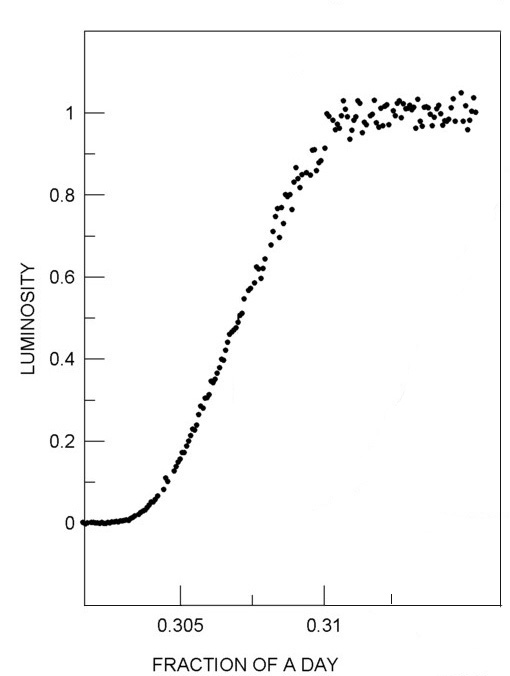PHOTOMETRY OF GALILEAN SATELLITE ECLIPSES
Anthony Mallama
-----------------------------------------
Would you like to contribute to research begun by Galileo almost
400 years ago?
If you have a CCD camera and some experience with
photometry, this article tells you how.

Many people that I talk with are surprised to learn that amateur astronomers
make the most accurate measurements of planetary satellite positions. Analysis of CCD eclipse photometry for Io, Europa, Ganymede and Callisto in the shadow of their planet produces very exact locations. Unlike direct astrometry, photometry is not effected by the large distance to Jupiter. Since the positions of Jupiter and the Sun are very well known, the satellite positions can be derived almost equally well from a good eclipse light curve.
These eclipse timings and the resulting satellite positions are used by professional astronomers to derive orbits for the Galilean satellites. The orbits will be used for future spacecraft missions such as the Jupiter Icy Moon Orbiter, which will require very accurate predictions of satellite positions in order to go into orbit around them. Astronomers also use the CCD results to test theories of the orbits that pertain to tidal effects on the satellites. These tides may sustain a liquid water ocean under the crust of Europa, however better orbital data are needed to be sure. The timings made by visual observers without photometers are no longer used because they are not accurate enough.
I have lead a small group of observers using CCDs to time Galilean satellite eclipses since 1990. We use telescopes similar to the LX200 and CCDs such as the ST-7, ST-8 and the old SpectraSource Lynxx. Our record of eclipses is fairly continuous over the past 14 years, however we miss a lot of eclipses because we are not uniformly distributed in longitude around the Earth. Three of us are in the United States and one is in Australia. So, we would welcome one or two observers from Europe with previous experience in photometry. A southern European country like Italy would be ideal because Jupiter will be south of the celestial equator for the next six years.
If you are interested in learning more, please contact me at anthony_mallama@raytheon.com. You can also read more about our research in the Sky and Telescope article on pages 700-702 of the June 1992 issue. If you have access to the professional journal Icarus we have a series of articles there. The latest one was in 2000 in volume 147, pages 348-352.
Enter
the forum and ask your questions to the author!
Back
to the Meeting index
